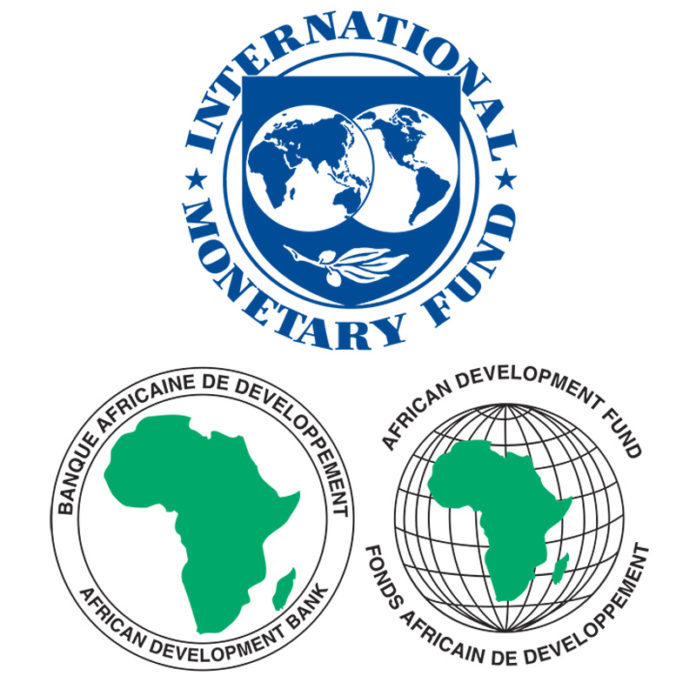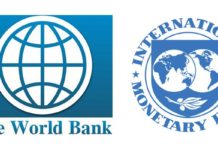by Mahmud Tim Kargbo
4th August 2021
COVID-19 pandemic has caused a surge in public financing needs as the Bio led government and other governments around the globe spend more to mitigate the socio-economic consequences of the pandemic. In this regard, the International Monetary Fund and the African Development Bank deliberately failed to understand that the average debt to GDP ratio across government is expected to increase significantly.
Since the COVID-19 pandemic began in early 2020, governments across the world have announced fiscal stimulus packages ranging in cost from about 0.01% of GDP to about 10.4% of GDP. Government financing needs surge as countries have to fund the packages aimed at allowing their citizens to weather the social and economic consequences of the pandemic. The International Monetary Fund and the African Development Bank in their analysis failed to take into consideration that these fiscal stimulus packages largely have immediate direct implications to government spending, budgetary balances, borrowing needs and debt levels. Although about a quarter of countries in the globe use revenue measures such as tax relief and tax payment deferrals as an intervention measure to effect expenditures and public investment in health, support to smaller medium-size enterprises and cash transfers. The International Monetary Fund and the African Development Bank willfully failed to understand that these surge in government financing needs as a result of the COVID-19 spending result in fast pace debt accumulation to the Bio led government and other governments around the globe.
In their desperation to champion what many right-minded nationals see as regime change, the International Monetary Fund and the African Development Bank skilfully avoid grasping the fact that having debt doesn’t necessarily mean that a country is poorly run or financially unstable, in fact, some of the world’s biggest economic powers have a lot of debt with Japan topping the chart with 257% of debt to GDP ratio and the United States with 106.78%. Though there’s a fine line drawn between a healthy and unhealthy amount in terms of debt composition.
Both the International Monetary Fund and the African Development Bank in what’s clearly seen as their attempt to spread deceitful economic news against the current Sierra Leone Bio led government, evaded the fact that the contraction in net financial inflows from Foreign Direct Investment, Portfolio Investment and Remittances due to the pandemic have affected corporate and household financing and debt. Domestic sources of financing such as tax and none tax revenues which often accounts for a significant portion of the Sierra Leone government’s revenue were seriously affected by the pandemic due to business closures and capital flight from foreign investors who were already doing business in the country.
The International Monetary Fund and the African Development Bank analysis failed to capture that the supply and demand shocks caused by the COVID-19 pandemic directly impacted the revenues of the Sierra Leone government through reduce export earnings and lower domestic tax revenues. The hard, but uncomfortable truth is the collapse in both the demand for and price of the country’s main export commodity and other primary commodities which account for more than 60% of the Sierra Leone government revenues which are classified as resource-intensive economy means that the Bio led government do not have the required capacity to respond to the pandemic and have to rely on debt instruments.
Notwithstanding that, there’s room for recovery according to Trading Economics. In data published by Trading Economics, the country’s GDP is expected to reach $ 3.91 by the end of 2021. Trading Economics Global Macro Models and Analysts Expectations. In the long term, the Sierra Leone GDP is projected to trend around $4.10 billion in 2022 and $ 4.30 billion in 2023, according to their econometrics model. Source: https://tradingeconomics.com/sierra-leone/gdp
In light of the above analysis, one starts to question the disparity in information between the International Monetary Fund and the African Development Bank with those other analysts with particular reference to Trading Economics. A recent debt investment growth model developed by the African Development Bank in collaboration with the International Monetary Fund show the links between debt and investment in social and economic infrastructure given segmented labour market.
Considering the fact that the current Bio led government has committed a greater portion of its budgetary allocation to improve on the human capital of its people; which is associated with a favourable long-run effect on debt reflected in the growth and revenue gains. Investment in human capital is much more effective than investment in infrastructure in promoting long-run economic growth. Investment in human capital affects labour productivity with a long leg, which takes more than 15 years until output surpasses its counterpart in a programme that invests mainly in infrastructure.
Judging from the above perspective, the Bio led government has continued to invest in programmes that involved both human and physical capital which are found to have greater payoffs than programmes that invest exclusively in one because there are mutually reinforcing effects between the two types of investments. As a result, the debt stabilising effect might be higher. Furthermore, estimates in the 2020 Africa Economic outlook show that the efficiency of education spending is much lower in Africa at 58% per primary schooling. Growth returns to debt financing investment in terms of education are also found to be lower in Africa compared to other low or middle-income economies. This suggests that by merely improving the efficiency and returns on education the country can maximise public investment outcomes without increasing spending. For instance, according to the 2021 Africa Economic Outlook Studies, it shows that Africa could almost reach universal primary enrolment by closing the efficiency gap in education spending which the current Bio led SLPP government has embarked on. Source: Debt Dynamics and consequences; https://www.afdb.org/sites/default/files/2021/03/09/aeo_2021_-_chap2_-_en.pdf




